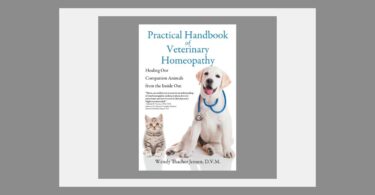Hi Dr. Khalsa,
I rescued my dog, Diesel, a 5-year-old Mastiff / Shepard a couple months ago. Since we’ve gotten him, he’s been having really bad ear issues, constantly shaking his head. His ears are bleeding and he’s incredibly uncomfortable.
He’s been on raw since we got him and I got him. The vet is pushing me to vaccinate him. I’m so lost. I’m really needing help for him using a holistic approach.
Thank you,
Colleen Higgins
Dr. Deva Khalsa:
Hi Colleen,
Diesel has a yeast growing deep in his ears called Malassezia. It is a dark-black-brown yeast and it has established itself all through the ear. It is very itchy. Malassezia occurs when the organism Malassezia pachydermatis, which is normal in small amounts on the skin and in the ear canal, overgrows and causes itching and inflammation of the skin. An infected dog may have a musty smell, or you will find a brown, slightly sweet-smelling substance in your dog’s or cat’s ears.
TREATMENT NEEDS TO START PROMPTLY AND LAST SEVERAL MONTHS
Even though the most common organism causing ear infections in dogs is a yeast, they’re often conventionally treated with an ointment containing steroids, antibiotics and antifungals.
This treatment lasts for two weeks at the most, with the ear infection often returning a few times a year. After months or years of this kind of treatment, the problem changes to a bacterial infection. At the bitter end, we wind up with resistant bacteria as the source of infection. This is why we have to get ear problems handled properly and completely right from the start.
We’re all used to thinking that bacterial and yeast infections, when treated with appropriate conventional drugs, will simply respond and clear up uneventfully. While this may be the case with something like a bladder infection, the ear is an ongoing science experiment. Basically, it’s a petri dish where anything can grow depending on the dynamics within the ear. The ear is moist, damp and dark, and particularly ideal for yeast growth. That’s why treatment has to be prolonged over several months, until a healthy balance becomes naturally maintained.
Malassezia yeast grows slowly, yet tenaciously. It can be difficult to get rid of because once it’s established it’s slow to recede. That’s why you have to persist over time with the treatment – and be ready to act when summer comes if your dog swims in lakes or swimming pools.
A dog’s ear canal is very long, unlike the human ear canal. Those prescribed ointments typically clear up the part of the ear closest to the surface, while the yeast shelters deeper in the ear canal and grows back up the drain, so to speak, when conditions become suitable again. The deeper sections of the ear will still contain that overgrowth of Malassezia, which then moves back up to the more external parts of the ear canal when the conventional treatment is ended.
My latest book,
The Allergic Pet, Holistic Solutions to End the Allergy Epidemic in Our Dogs and Cats, has many options and solutions.
I also cover solutions for allergies at allergyelimination4pets.com.
Enzyme products that kill the yeast are my favorites. Zymox makes an all- natural enzyme-based ear medication, one that contains a steroid and one that does not. I reserve the steroid- containing product for inflamed and painful ears, and use it for only a few days. It’s really important to note that any dog with a yeast infection in his ears must be treated over a few months, but not continuously. What this entails is treating both ears with Zymox once a day for seven to ten days, then for one week of every month for four to six months. This is so the microbiome in the ear can balance out, since the yeast will continue overgrowing for some time after the initial treatment. Products containing gentian violet can also be used in the ear. The Allergic Pet and Dr. Khalsa’s Natural Dog contain recipes to make this inexpensively at home. Companies such as Liquid Health have a product called K-9 Ear Solution that contains all the ingredients. If your dog’s ears are sensitive, I recommend getting Tris-EDTA solution and adding a drop or two of gentian violet to the solution for use in the ears.
Dear Dr. Khalsa,
What can I do to help prevent my 7-year-old cat from blocking again. He just had a urinary block and was in the vet for 4 days. I want to avoid a repeat of this.
Thank you
Gerri
Dr Deva Khalsa:
The best methods to help prevent this are making sure he drinks a lot of water. You can add water to his wet food and discontinue any dry food. Additionally, you can acidify his urine with Wysong Biotic pH. Triple phosphate stones grow in high pH and keeping the pH lower stops the growth. You should understand that he likely has crystals still in his bladder as the veterinary procedure opens things up but does not necessarily empty and flush out all the crystals. If we use a remedy to flush the sand out and too much comes out he will block again. So usually I use a combination remedy to help ease irritation and relax the urethra while we increase water intake and lower the pH. With this, no second blockage occurs.
HomeoPet Feline UTI Plus Urinary-Tract Relief
Hello Dr. Khalsa,
Do you have any recommendations for an organic cat ear cleaner solution? My kitty has a sensitive immune system and runs “dry” due to climate. His ears have been an issue since he was born. Have tried recommended ones but they have toxic ingredients.
Thank you
Bruce Braverman
Dr Deva Khalsa:
You can try Witch Hazel, an old favorite.
Dear Dr. Khalsa,
My 9-year-old Siamese has a behavior issue which leads him to peeing on our hardwood floors. He’s had EVERY test done and all came back negative. He’s been on Prozac which is the only thing that has helped. I’d love to get him off of this and onto something natural!
Thank you
Marylou
Dr Deva Khalsa:
Prozac is a very addictive drug and it also changes the way the brain interfaces. Getting a cat off of this is a very difficult thing and would have to be done first. I would try VetriScience Composure Calming Formula for Cats. Get him on it for two weeks and then cut the Prozac dose in half and a week later half again( quarter of the original dose) and then this small dose after 10 days goes every other day for 20 days.
Hello Dr. Khalsa,
I have a 5-year-old American Staffy /Ridgeback who is terribly afraid of thunderstorms. Her heart beats super fast and she shakes so much and pants extra hard. Any suggestions on how to calm her?
Thank you
Brenda
Dr Deva Khalsa:
There are a number of remedies. First, Borax 6x or 30x or 30c three times a day for a week before the storm. This remedy is pretty specific for fear of thunderstorms. Other remedies are Lachesis and Phosphorus but the patient’s personality should be considered in choosing either of these latter remedies. Start with Borax- it usually works. The REMEDY. Not the cleaning agent.
Dear Dr. Khalsa,
My dog has had a reaction to a new injectable arthritis medication. He’s lost fur in multiple spots all near the injection site too. Any suggestions how I can help him detox and help the skin?
Thank you
Marvin Goldstein
Dr Deva Khalsa:
Nux vomica 6x- three times a day for one month







The calming chews – am considering them for my cat that is always meowing – for an hour sometimes (esp in the morning to get us up). I don’t like the fact that they contain canola oil which is toxic (no wonder some animals refuse to eat them). I suspect she learned the whining when she was in the pound at 1 year old (was taken there by owner when she got pregnant, had her kittens there, an a rescue came in and saved her – put her up for adoption. She was adopted and then returned due to allergies of owners roommate). We then adopted her and have had her since she was 13 months – now 14 years old. Is there anything else that would work? She is hard to catch to give doses to as she learns to run away from us when we try to get her for dosing. She always moves away when you come near her – need to get her to come to us usually which doesn’t always work. She seems worse about the whining/meowing since our older cat passed in April of this year.